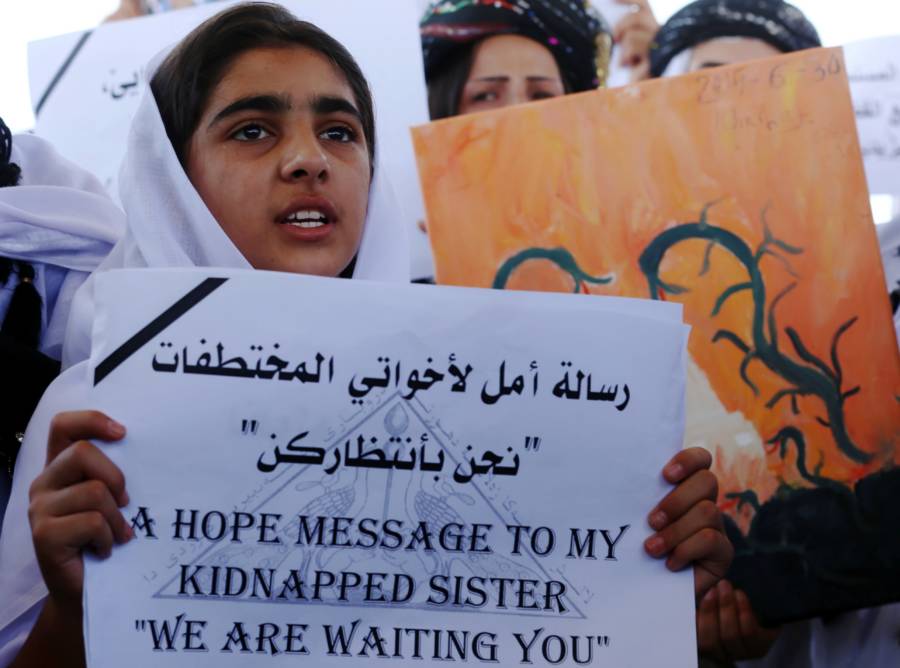ISIS Slaves Today

SAFIN HAMED/AFP/Getty ImagesAn Iraqi Yazidi woman holds a placard during a protest outside the United Nations office in the Iraqi city of Arbil on August 2, 2015 in support of women from their community who were kidnapped the previous year in the Sinjar region by ISIS.
Perhaps no modern regime is as fond of slavery as the Islamic State.
ISIS has always portrayed itself as a back-to-basics interpretation of Islam that operates exactly the way in which they believe the Prophet Muhammad would if he were still alive. This means that, when given a choice between a modern interpretation of a Quranic verse and the most backward, barbaric interpretation imaginable, ISIS theologians will take the barbaric one every time.
In practice, this means that any non-Muslim who has the misfortune to live in an ISIS-controlled area is subject to special taxes and restrictions on freedom, as well as recruitment of the family’s young men as fighters for ISIS’ army. It also means that non-(Sunni)Muslim women and girls must live in fear of being taken as a sex slave.
A Christian or Shiite woman or girl taken into ISIS captivity is likely to be beaten and raped, followed by a trip to a slave market in chains, where she will be auctioned off. Mosul was once the site of ISIS’ largest slave block, though recent advances by the Iraqi Army have retaken the city and shut down the market.
From the start, Yazidi women in Iraq were a particular target for enslavement by ISIS. Girls as young as six have been kidnapped and sold across ISIS’ territory. In ISIS’ interpretation of Islam, there is no sin in raping Christian captives because it doesn’t quite count as sex the way it would with a Muslim woman.
Beatings and forced labor are in the same category of moral consideration, and survivors’ stories speak of such horrors being inflicted on the widows and daughters of slain Yazidi men.
This treatment is always sanctioned by a literal reading of the Quran, and it’s backed up with modern fatwas by Wahhabi scholars. And with a watertight theological justification, perhaps slavery is set to last for as long as Islamist and theocratic regimes dominate the Middle East and North Africa.
After this look at ISIS slaves and the history of slavery in Islam, see 55 harrowing photos that depict the war against ISIS. Then, discover the meaning of jihad and learn why it may be one of the most misunderstood facets of Islam.





